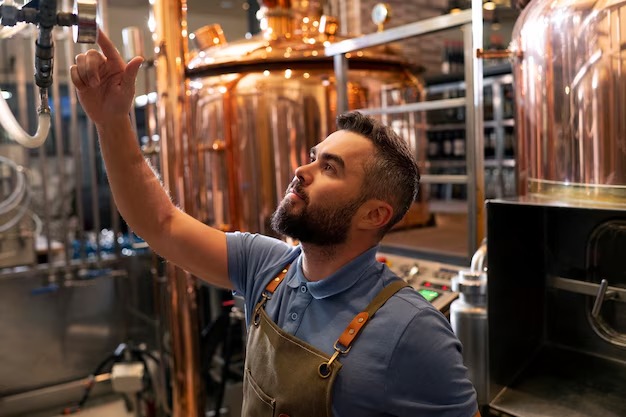Master Your Image with These Tips for a Successful Personal Branding Photoshoot
Embarking on a journey to cultivate your unique image can be both exciting and daunting. Capturing the essence of who you are through imagery requires thoughtful consideration and planning. It’s not just about looking good; it’s about conveying authenticity and ensuring your visuals resonate with your audience.
Every detail counts, from your choice of wardrobe to your positioning in front of the camera. Understanding how to effectively communicate your message through visuals will set the foundation for a successful outcome. With strategic preparation, you can enhance the storytelling aspect of your images, allowing them to reflect your personality and values.
Adopting a proactive mindset can make a significant difference. Engaging in self-reflection and envisioning the narrative you want to portray can transform an ordinary experience into a powerful tool for connection. Your imagery should not only capture a moment but also serve as an extension of your identity, inviting others to engage with your story.
As you embark on this creative endeavor, remember that preparation goes beyond logistics; it involves introspection and clarity. With the right approach, you will be well-equipped to create visuals that authentically represent who you are and what you stand for.
Understanding Personal Branding Photography
In today’s competitive landscape, the way individuals present themselves visually can significantly impact their professional opportunities and personal image. Capturing authentic representations that resonate with one’s identity can make a profound difference in how one is perceived by others. This genre of photography transcends mere images, aiming to convey stories, values, and unique characteristics that define a person.
The process involves careful consideration of various elements that contribute to effective visual storytelling. From selecting the right environment to choosing outfits that reflect personal style, each aspect plays a crucial role in creating a cohesive narrative. It’s not just about looking good; it’s about communicating a sense of who you are in a glance.
| Element | Description |
|---|---|
| Lighting | Natural or artificial illumination that enhances features and sets the mood. |
| Composition | The arrangement of elements within the frame, creating balance and focus. |
| Wardrobe | Clothing choices that reflect personal style and professionalism. |
| Location | Background settings that complement the narrative being conveyed. |
| Expressions | Facial emotions and body language that communicate confidence and approachability. |
By understanding these components, individuals can work more effectively with photographers to achieve images that genuinely represent their aspirations and the message they wish to share. This awareness fosters a collaborative environment where creativity can flourish, leading to stunning results that leave a lasting impression.
Choosing the Right Location for Your Shoot
Identifying the perfect setting can significantly enhance the overall narrative of your imagery. The backdrop you select serves as a canvas that complements your personal style and message. Whether you’re aiming for a relaxed tone or a more professional vibe, the surroundings will play a crucial role in visual storytelling.
Consider the atmosphere you wish to convey. Urban landscapes can provide a modern, dynamic feel, while natural environments often evoke tranquility and connection with nature. Reflect on how each option aligns with your vision and the message you want to communicate to your audience.
Additionally, lighting is paramount. The time of day can drastically alter the mood; early morning or late afternoon sunlight typically offers a soft, flattering glow, whereas midday may cast harsh shadows. Take into account the availability of light at your chosen location to ensure the best possible outcome.
Don’t overlook accessibility as well. Choose a site that is easy to reach and allows for movement, enabling you to explore various angles and compositions without hassle. A location that provides multiple backgrounds can also increase the variety of shots, enriching your portfolio.
Finally, ensure that the location resonates with your target audience. A place that reflects your values and interests can create a stronger connection, making your imagery more relatable and impactful. Choose wisely, and your selected location will amplify the essence of your visual narrative.
Selecting Outfits That Represent You
Choosing the right attire is crucial for creating a visual narrative that resonates with your identity and values. Each piece should communicate your uniqueness and reinforce the impression you wish to leave on your audience. An outfit serves not just as a means of dressing but as an extension of your personal story.
Understanding Your Personal Style
Recognizing your aesthetic preferences is the first step in making informed choices. Take inspiration from various sources such as fashion blogs, magazines, and your own wardrobe. Identifying key elements that attract you can help shape your wardrobe strategy and provide clarity as you approach the selection process.
Color Palette Considerations
Colors can evoke emotions and play a significant role in shaping perceptions. Think about shades that make you feel confident and comfortable. While bold colors can attract attention, subtle tones may create a sense of calm. Consider how different colors complement your skin tone and align with the message you want to convey.
| Color | Emotion Conveyed | Best For |
|---|---|---|
| Red | Passion, Energy | Dynamic settings |
| Blue | Trust, Calm | Professional environments |
| Green | Growth, Balance | Creative industries |
| Black | Elegance, Authority | Formal occasions |
Ultimately, the chosen garments should harmonize with your character and mission, allowing your personality to shine through every captured moment.
Communicating with Your Photographer
Effective interaction with your photographer plays a crucial role in achieving outstanding images that truly reflect your identity. Establishing clear understanding and expectations can significantly enhance the outcome of your session.
- Share Your Vision: Clearly articulate your ideas and concepts. Describe the mood, style, and message you want to convey through the visuals.
- Discuss Your Goals: Talk about the specific objectives you want to achieve with the images. Whether it’s for social media, business, or personal use, precise goals guide the creative process.
- Provide Examples: If possible, share reference images or mood boards. Visual aids can help your photographer grasp what you have in mind more effectively.
- Talk About Locations: Discuss potential settings that resonate with your aesthetic. Whether you prefer indoor or outdoor venues, aligning on the backdrop choice is essential.
- Address Comfort Levels: Inform your photographer about any aspects that make you uncomfortable. They can adjust their approach to ensure you feel at ease during the shoot.
Building a strong rapport with your photographer can lead to a more enjoyable experience and breathtaking results. Open dialogue fosters collaboration, allowing both parties to contribute to a successful photoshoot.
Preparing Your Makeup and Hair
Achieving a polished and professional appearance greatly enhances your visual identity. Focusing on the details of your look can create a lasting impression, so dedicating time to hair and makeup is crucial.
Consider the following aspects to elevate your overall presentation:
- Makeup:
- Choose shades that complement your skin tone and enhance your features.
- Avoid overly dramatic looks; aim for a fresh, natural appearance.
- Utilize high-quality products to ensure longevity and vibrancy throughout the session.
- Practice your look ahead of time to find the right balance.
- Hair:
- Decide on a hairstyle that aligns with your desired message.
- Consider options that frame your face and highlight your best attributes.
- Ensure your hair is clean and styled as per your plan, possibly investing in professional assistance.
- Have tools and products handy for touch-ups during the shoot.
Prioritizing the enhancement of these elements allows you to step into the session with confidence, ready to showcase your authentic self.
Building Confidence Before the Camera
Facing the camera can be a nerve-wracking experience for many individuals. To enhance your comfort level in front of the lens, it’s important to embrace strategies that foster a sense of self-assurance and ease. Engaging in practices that promote confidence will not only improve your overall experience but will also result in more authentic and compelling images.
Visualize Success
One effective method to reinforce your confidence is visualization. Picture yourself in front of the camera, exuding poise and charisma. Imagine the positive reactions from your audience and the satisfying outcome of your session. This mental rehearsal can significantly reduce anxiety and help you approach the moment with a positive mindset.
Practice Makes Perfect
Another valuable approach is to rehearse your poses and expressions ahead of time. Stand in front of a mirror or take a few practice shots with your phone. Experiment with different angles and facial expressions to discover what feels natural and represents your personality best. Familiarity with your own image will instill greater confidence when the actual moment arrives.
Using Props to Enhance Your Brand
Incorporating various elements into your visual narrative can significantly elevate the representation of your identity. These objects not only add depth to your imagery but also create a connection with your audience. Thoughtfully selected items can convey your values and personality, making your portrayal more memorable and impactful.
Choosing the Right Items
Selecting appropriate accessories is crucial. Here are some considerations to keep in mind:
- Reflect Your Personality: Choose items that resonate with who you are and your passions.
- Stay Relevant: Ensure props are aligned with your industry and audience.
- Quality Matters: Opt for high-quality props that enhance the overall aesthetic.
Types of Props to Consider
Diverse types of elements can be utilized, including:
- Personal Items: Books, instruments, or tools that reflect your hobbies.
- Branded Materials: Items displaying your logo or tagline to strengthen your identity.
- Nature Elements: Flowers, plants, or natural backdrops for a more organic feel.
Using props effectively can lead to a more relatable and engaging visual story. Thoughtful incorporation of these elements allows you to express your uniqueness and connect deeply with your intended audience.
Q&A: Prepare for a Personal Branding Photoshoot
How can business owners ensure their personal branding photo shoot aligns with their brand identity and values?
Business owners should prepare for their personal branding photo shoot by creating a shot list that includes specific images to represent their brand story and brand personality. You’ll want to make sure the shoot location complements your brand colours and reflects the vibe you’re going for. Don’t forget to communicate your brand values to your personal brand photographer so they can capture professional photos that accurately represent your brand and resonate with your ideal client.
What are top tips to help you prepare for your personal branding session and feel confident on shoot day?
To prepare for your personal branding session, first choose clothes that fit well and align with your brand colours. Get plenty of sleep the night before to help you feel more confident during the shoot. Create a shot list to ensure the photos taken meet your goals for website and social media use. Even if it’s your first branding session, having a clear plan and working with the right photographer will make a big difference.
How can professional brand photography make or break your brand recognition?
Professional brand photography is crucial for brand recognition as it helps create images that accurately represent your business and personal brand. Photos created during brand photoshoots should reflect your brand values and attract your ideal client. A professional brand photographer will use natural light, select the best location, and produce high-quality images to build a consistent visual identity. Make or break moments often come down to how well your photos resonate with your audience.
What questions should you ask your photographer before booking a personal brand shoot?
When booking a personal brand shoot, you’ll want to ask your photographer about their experience with branding photo shoots and whether they can help you plan a successful session. It’s not always clear how to prepare, so discuss your brand story, shot ideas, and location ideas. You’ll also want to make sure the photographer can create professional photos that can be used across your website and social media for consistent brand recognition.
How can you plan a personal photo session to ensure it captures your brand’s essence?
To plan a personal photo session, first things first, find a photographer experienced in professional branding. You’ll need to plan key details like the location, wardrobe, and props, such as a coffee mug or product photos that align with your brand. Give your photographer a clear idea of how you’ll use the photos, whether for your website, social media, or marketing materials. This preparation helps ensure the images we create accurately represent your brand identity.
What tips for preparing a headshots session help you feel confident and look professional?
Tips for preparing a headshots session include wearing clothes that make you look polished and reflect your personal or business brand. Pre-shoot, ensure you’re well-rested and practice posing in front of a mirror to feel more comfortable during the photo session. If you’re not sure how to prepare, discuss shot ideas with your photographer to capture the best angles that highlight your professionalism and personality.
Why is it important to give your photographer a clear vision for your photoshoot?
Giving your photographer a clear vision ensures they can capture the right images to meet your goals. Let them know if you’re looking for headshots, product photos, or creative shots with props like a coffee mug to reflect your brand. Share how you intend to use the photos, whether it’s for marketing, social media, or personal branding, so they can plan lighting, poses, and settings that make you look authentic and approachable.
How can a professional photographer help create a beautiful brand through a personal photo session?
A professional photographer brings expertise to creating a beautiful brand by understanding how to use lighting, angles, and settings to highlight your brand’s personality. They’ll help you choose locations and props that align with your vision, ensuring the images we create resonate with your audience. If you’re not sure how to prepare, they can provide guidance on wardrobe, shot ideas, and tips for making your session a success.


